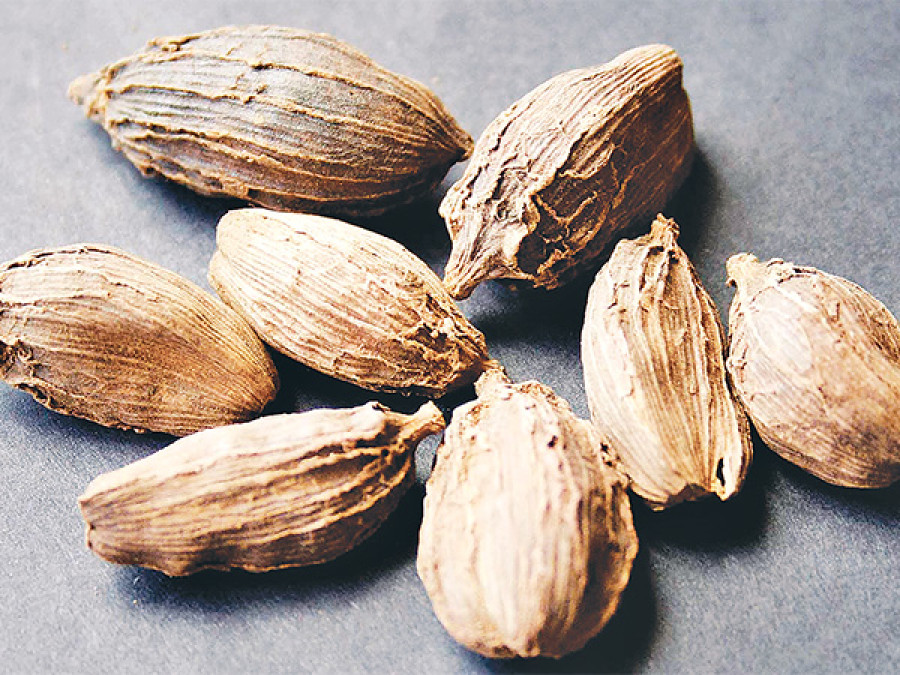Opinion
Black gold
Farmers in Ilam are willing to give another shot at cardamom cultivation if the government helps eradicate disease
Sony KC
The Government of Nepal lists cardamom as a high-value cash crop for export. Cardamom farming was introduced in Ilam centuries ago by Nepali labourers in Sikkim. Newspapers have frequently reported on the rise in prices of cardamom and elated farmers across Nepal. Few have highlighted the diseases that inflict cardamom farms. Even less has been written about the impact of various cardamom diseases on the livelihoods of farmers. Also, less has been said about measures adopted to protect the crop from diseases.
Dying crop
For my PhD research, I travelled to picturesque Ilam between February and March this year to explore the livelihood of cardamom farmers. Based on stakeholder consultation and mapping in Ilam municipality, I visited Chameta, Pyang, Naya Bazaar, and Jirmale VDCs.
I learned that in the past decade, the centuries-old crop has been inflicted by a mysterious virus and fungus. In every VDC, the moment I mentioned cardamom as the object of my study, farmers looked at each other and mumbled, “There is no cardamom in Ilam anymore”; “cardamom is gone…finished”; “our tradition was cardamom”; “cardamom was our rice.” Some burst into laughter saying, “If you are here for a project, please help us bring cardamom back.”
Before the disease, a cardamom plant would bear fruit for 10 years, once planted. Post the disease, the plant bears fruit for only one year. While in the past, farmers did not have to do much after plantation, as it did not require irrigation, the current scenario demands strict irrigation and fertilisers.
The invasion of this disease has caused multifarious problems for farmers. First, the lack of production has created a livelihood imbalance. One man from Chameta said, “We produced very less this year, about 80 percent less. A farmer can only dream of saving his crop.” While a woman from Pyang said, “We produced 60 mann (2,400 kg) before the disease. This year, I made 10 kgs. The price has increased now. I could have made a fortune if I had produced what I used to before.”
Considering alternatives
The decline in production has distressed farmers. However, despite lower production, the prices of cardamom have skyrocketed, often resulting in the comparison of the product with gold. The implication of an increased price is related to a few farmers who were able to harvest cardamom. The majority still suffer from a decline in production, leading to low incomes caused by an intractable disease.
Second, lack of production has made farmers willing to adopt alternatives. They have started growing potatoes, kiwi, squash, and ground apple instead of cardamom. Farmers with big land holdings have switched to tea. However, tea has a tendency to go to waste because of poor infrastructure and a lack of access to markets.
“There are many local collectors for cardamom, because it holds high value. There is no comparison between cardamom and other crops,” said a local from Naya Bazaar. The cost of taking cardamom to the market is compensated for by its price.
A female respondent added, “We grow ground apples now. But most of it is fed to cattle. There is no market. Ground apple is not cardamom.” Many farmers spoke of reviving cardamom farming if the disease is tackled. Moreover, having alternatives is not a bad thing as long as there are infrastructures and market channels.
Third and most evidently, cardamom growers are in a dilemma, constantly prying for a cure. There were mixed responses—about the government attempting to combat the disease to doing nothing.
A woman from Pyang reported, “Two people came for soil testing five years ago. They took a soil sample and disappeared.” Another respondent added, “Nothing has been done from the government besides producing new saplings. If the soil is bad, how can a new sapling survive?” A respondent from Naya Bazaar testified, “I made few trips to the concerned centres. But they said they were still looking for solutions.”
Back to gold
There were reports of burning down an entire cardamom field in many parts of Ilam to kill the virus and fungus. This exacerbated the situation by degrading fertile soil. Some farmers left the land barren for few years hoping they could produce cardamom. Few cardamom farmers, also part of agricultural organizations, visited Biratnagar and Kathmandu looking for solutions. Most measures have failed and farmers have panicked. Yet they have not given up.
On the part of the government, the Cardamom Development Centre in Fikkal, has been producing new saplings in its nursery to replace the old. According to an official, “We lack technicians who can test the soil and identify the actual problem. It is difficult to get rid of the virus or fungus. We have been struggling for a decade. We are trying hard to revive the cardamom farming. At present we have been planting the Salakpurey sapling because people in Salakpur have produced well.”
From the central level, Nepal lacks a well-defined agriculture act. Even though cardamom has been identified as a high value crop by the government, it doesn’t seem to do much for farmers. There should have been an investigation ten years ago. Still, it is not too late to make amends.
At the local level, it has been a struggle connecting farmers with the government. The siren call is that cardamom farming needs a revival. The caveat being, the task is not easy. But farmers and local government institutions have not given up. Farmers are still willing to contribute to the nation’s economy, if provided with support. It becomes the responsibility of the government, associated organizations, and researchers to collaborate and assist farmers on the verge of losing their tradition—the one of planting black gold that does not glitter.
KC is a PhD candidate in ‘the feminisation of agriculture transition and rural employment’ at Kathmandu University




 12.12°C Kathmandu
12.12°C Kathmandu










